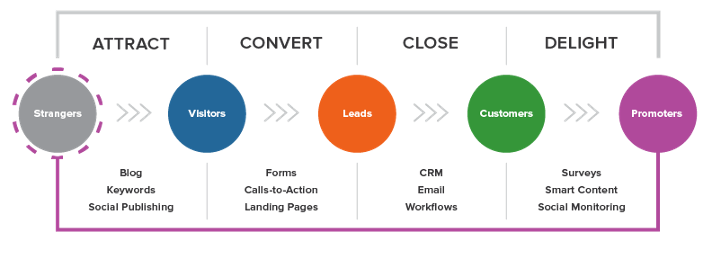A membership-based business model isn’t an easy one to sustain. Unlike traditional businesses that aim to sell a product or service once (ideally with the hope of reoccurring sales of course), member-based businesses rely on members, or subscribers, investing in their product monthly (or annually) in order to be profitable. This means they must always be focused on three goals simultaneously: attracting new members, converting potential members to active members and keeping current members engaged and happy.
One-size-fits-all traditional marketing tactics no longer work in accomplishing these goals. Businesses can’t attract new members by cold calling or with in-your-face ads, and they can’t keep members engaged with snail mail or email blasts. People want content that feels like it was written for them, and they want to find it on the platforms they like when they are looking for it.
This is where an inbound marketing strategy makes all the difference. The foundation of inbound marketing is to create quality content that matters to your customers and gently enable them to find it on their terms. In other words, less interrupt, more attract. As it is equally important for membership-based businesses to connect with both potential members and active members, an inbound strategy is necessary to ensure they are covering their bases effectively and efficiently.
Let’s break this down a bit further by looking at membership-based companies' main objectives for business growth and why inbound marketing allows them to accomplish those goals.
First, a visual. The following showcases the various stages of interaction that inbound marketing accounts for and the tactics recommended at each stage, which I'll touch on below.

Goal #1: Attract potential members.
Why inbound marketing works: With an inbound marketing strategy, businesses will earn potential members’ attention by creating interesting content they can't resist, and making it easily accessible across multiple platforms like a blog, ebooks and social media, in addition to their website. Through this content, they will establish their expertise and start building trust and credibility.
Goal #2: Engage potential members and convert to active members.
Why inbound marketing works: Once potential members have made their way to the website, a successful inbound strategy will use conversion pages to collect useful information that sheds light on their online behaviour. With this knowledge, businesses can deliver a higher level of personalised engagement that strengthens the relationship and ultimately prompts people to subscribe or become members.
Goal #3: Keep active members happy and maintain their ongoing loyalty (i.e., stay profitable).
Why inbound marketing works: An inbound marketing strategy will not end once a potential member becomes active, which is specifically important for membership-based businesses since members, or subscribers, are the main revenue stream. To keep people satisfied with their membership, inbound marketing will ensure businesses are constantly gathering digital intel on how their members interact with their communication platforms, so they can keep providing them value. By staying on top of what inspires members and the attention they seek, businesses will maintain their authority and credibility – and most importantly reinforce an active role in their members' lives.

January 31, 2019

